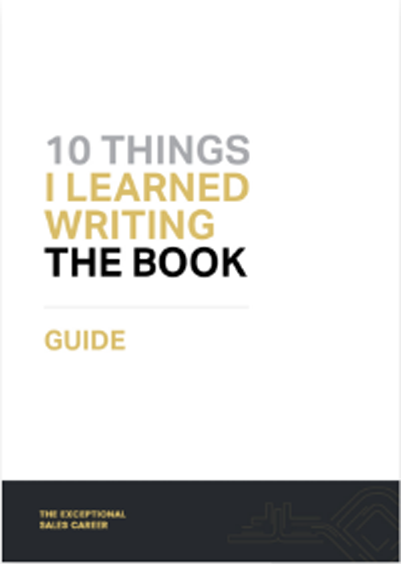One thing I’ve learned from this project is: when you ask for referrals, be specific about the referrals you would like. When I asked my mentors for a networking guru, I was directed to Amanda Derham.
Amanda has an enormous network and is active in multiple venture capital partnerships. Read on to understand the traits she looks for in investable and connectable partners.
You can read Amanda’s full biography here.
Jamie: Amanda, when you look back on your career thus far, what have you found most fulfilling?
Amanda:
My superpower is listening and matching. The most fulfilling, satisfying thing is the jigsaw puzzle of understanding people’s needs and finding a match.
That’s the way the world goes round. Whether it is a university with a pain point around commercialising scientific research, a mother whose child is one of the 40% of children worldwide with language delay or a company board with regulatory compliance and performance issues. All have urgent, survive and thrive problems that need solving.
These are examples of where I like to work with companies that are part of the solution. Walking the path to a solution, to finding the part of the puzzle that completes the picture is about taking everyone with you along that path to the solution. If you can achieve that, it’s very satisfying.
Jamie: So are you really interested in helping people to have paradigm shifts, where they realize something new and change their behaviour as a result?
Amanda: It has already changed their behaviour, and evolved to meet both of their needs. It sounds a little esoteric, but people work best when they can create something together. If there is a common goal for the two parties to come together, pool their skills, and then they can pull in other skills that they are missing, you can find that they can achieve milestones – creative, product/market fit, fundraising and so on. This is enormously satisfying for everybody.
One example is easy to explain; Universities are the source of world breaking research that solve real problems. However, the commercialization path is not always part of a scientist’s skill, nor should it necessarily be. Managing stakeholders, employing the right team, executing on a commercial strategy and raising funds are skills that are not necessarily compatible with research. This is where a venture capital fund like Significant Capital Ventures provide the rocket fuel needed for success. We understand universities and their unique way of doing things. We help with the path to market, product/market fit, manufacturing scale up, the team. This is the rocket fuel of the commercialization puzzle and is as important as the funding that we bring to the table.
Jamie: Does creating partnerships come naturally to you, or is that a skill that you have developed?
Amanda: It is something that seems logical to me. I hate conflict. I do not like to go into a battle fully armoured, and prefer to persuade. Partnership and collaboration seem natural ways forward to me.
Jamie: How did you decide to go into venture capital?
Amanda: It was an evolution. Eschewing fulltime executive roles, I was developing a portfolio board career, when angel investing came onto my horizon. A friend said, “You have to. You just have to do this. It is fascinating and interesting.” With a background in family manufacturing dairy products business, setting up new plants, manufacturing plants in rural Victoria I have always been interested in the commercial and entrepreneurial hands-on businesses.
With less than 5% of the venture capital dollars in the U.S., Australia, and the U.K. goes to female entrepreneurs the challenge of making a difference galvanized my interest. I joined an organization that focused on female entrepreneurs, because. in Victoria alone, one in four entrepreneurs is female. There is a dearth of dollars that go towards supporting female entrepreneurs. And that was an area I thought I could contribute to, and a couple of friends said, “Come on, come and join us.” So that was the beginning. I am now an investor in start-ups with the focus on female founders. Simultaneously, I invested in a friend’s robo-advice fintech start-up. The finance sector needs disruptors in financial advice and compliance. This heavily-regulated industry is ripe for disruption.
That was my first step, stepping into this venture capital world via an angel investment portfolio. Then I stepped back into executive life and worked at Scale investors, the female founder-focused angel group, number of years. I thought I might as well become more involved and learn more.
The next step has been a venture capital fund, which focuses on commercializing university-based science and research. In Australia alone, the government spends over a billion dollars a year funding university-based research. The universities are heavily research focused under resourced in commercializing research.
Australia’s research is in the top four in the world. However, we are at the bottom of the OECD league table as far as commercialization. We have fantastic research, but only about 4% ever sees the light of day in terms of coming to market. And the applied material technologies buried in the university research are life changing. It’s a matter of applying the business acumen to actually extract them from the university’s help, the university’s commercialization office, the tech transfer offices, to put them together into a business framework and match talented people outside the university with researchers to form a business and get product to market.
That is the venture capital firm that I am involved in; I love the experience because we focus on applied technology. We do not look at medicine or deep tech. We focus on applied tech. It is very practical and just fascinating. Things like a better way to tackle global cybersecurity skills, R&D lab instrumentation, healthcare powered by AI and delivered by smartphone, immersive training for frontline hazardous workers, digitization of photographers’ workflow. They are very, very practical disruptive technologies.
Jamie: Why do you think that a disproportionately small amount of Australian investment dollars goes to women-fronted start-ups?
Amanda: Yes. But it’s not only in Australia. It is in the UK and the US as well. I do not know about Canada, but I would assume Canada is similar. Why? I think it is about networks. It is about men working a different way. It is dangerous to generalize but women are traditionally more collaborative and often realistically state the risk rather than promise the world.
Jamie: What are the barriers for a start-up in terms of accessing funding and getting in front of the right people?
Amanda: A start-up needs to find rocket fuel to progress, and rocket fuel is resources. Those resources are not only money. Money is, obviously, key because it fuels the expansion from a good idea into an actual business. But you also need to find people who will help you validate your idea, find potential customers, refine your idea; because many start-ups start with a good idea, and the business that they end up in is very different from what they originally thought. Start-ups need communities and individuals who can help them refine their business over and over again until they come up with what the market actually wants. It is the community, the individuals, the resources, money, and a place to rent, and the right people to employ.
They need help with all that because often an entrepreneur starts with only an idea. The best entrepreneurs own the problem. They may not yet have the skills to build a team. They might be very good at marketing themselves, but they do not understand how to tell a story and bring people along with them. They have got to find partners who will find the collaborators and the knowledge that they need on this journey.
Sometimes, as a start-up, you build a “Minimum Viable Product” and you are ready to go to the market but you find halfway through your scaling that you have actually got to rebuild the tech, and that happens quite often. So, it’s all about the support networks that you can build. It is a logical thing. It is collaboration, and you cannot do it by yourself.
However, you need an entrepreneur or a team to drive it, because that is very hard.
Jamie: From your impression from the start-ups you have seen, if we talk about primary sales person or fundraiser or marketeer – what characteristics do they typically show if they are successful?
Amanda: Commitment, passion, and grit because the road is very long and lonely and you need extraordinary grit to keep going. Also, an ability to get past the setbacks, because there will be enormous setbacks. And you need to have the personality to convey the story that captures investors and customers imagination. And you need absolute doggedness. That is an entrepreneur’s secret sauce, but also their worst enemy, because often they do not know when to quit, or when to pivot. And sometimes, that is both the best thing about an entrepreneur and the worst.
You have to have that grit, that belief, and that agility, too. One company I am close to, Talkiplay, helps children who find speech acquisition difficult. Sometimes that can be development, sometimes, it can be because their speech is just slow for them, or maybe they are from a non-English speaking background – there are a whole range of reasons.
The female founder, De. Annie McAuley, is a medical doctor with enormous resilience. She has survived a skiing accident in her twenties, lost the ability to talk and taught herself how to talk again, at the same time studied for medical degree. As the mother of has 3-year-old who was slow to acquire speech, she owns this issue. She has researched it a lot, and she obviously knows a lot about speech acquisition in humans from an adult point of view, but not from a child’s point of view. She has researched this and she has come up with a gamification of speech targeted at two-to-six-year-olds. The technology enables games to come alive and rooms, planets and dinosaurs talk to you. It is like walking into Beauty and the Beast.
Having trialled the technology in learning centres with great success, met the regulatory and educational targets we were ready to launch when COVID hit, and Melbourne went into lockdown. Her whole marketing plan and distribution was disrupted and absolutely devastated. Dr Annie has pivoted to refocus on her marketing and launched online. It is that sort of resilience that you have to have as an entrepreneur.
Jamie: Do you see a lot of start-ups fail because they do not have that front person – that fundraiser or multiple fundraisers?
Amanda: There are a number of different types of start-ups and founders – there are some entrepreneurs who are best at pitching. They are absolutely sensational at pitching and carrying the room and everybody says, “Yes. Wow! What a fabulous idea! It is just brilliant,” but they find it difficult to execute. Their task is to learn how to grow a team, to prove product/market fit, to scale manufacturing and continually grow their customer base.
There are entrepreneurs who are brilliant at execution, but they cannot tell their story so that investors can understand the product/market fit. Whether that is because their idea is crap, or whether it is because just that they cannot explain their idea in a way that people understand it – you see pitch after pitch and you actually do not know what this idea is actually going to do. You get it, but you cannot see why it is so important to develop. Sometimes that is because of the lack of communication and the people are not able to explain it to you. But sometimes, it is because it is a lousy idea.
It is really hard. You actually have to work quite hard at working out whether this is a good idea or whether it is just way off. There are all sorts of reasons for start-ups that do not get funded, but some of them are just shocking ideas.
A lot of the investor’s skill is to pick the ones where they think they can help tip over and activate whether it will be by money, or connections or personal skill, or they know the people to talk to in order to bring in the skill set.
A lot of people, particularly fifty-five and over are very interested in helping. They want to transfer their skills. They want to help and they often say they do not need money to help. The validation of their own ideas through a start-up is often enough, and they are delighted to support them. There is a lot of goodwill out there. For a start-up, it is a matter of connecting with those people.
Jamie: How do you pick the start-ups that you want to mentor?
Amanda: I have got to understand and empathise with the person first because it is a long journey. One of the most informative experiences for me was leading due diligence into a prospective investment of $300k+ to scale a female founder’s parent-focused website. The deal didn’t proceed because of a number of unanswered questions around past performance and current figures. I learnt more from leading this deal than other investments I have participated in. Similarly, lessons learnt from my investment into a portable water purification system that went into liquidation last year inform my assessment of founders and their businesses.
When people are very difficult to deal with before you invest, what are they going to be like after you have invested? Before investing this is a critical question. Investing in a start-up is a journey. There is an initial investment and if they are successful, which we all hope, there is a Series A, B and sometimes C capital raise. Sometimes, there is an opportunity to exit soon after an investment with a capital gain, however, mostly it is a five- to ten-year journey. A key for me is being reasonably comfortable with the founder.
Jamie: What effect has networking had on your career?
Amanda:
This is my creativity. I do not paint. I do not sculpture. So that is my creativity. To connect people and see them work on something and go to the next level – that gives me satisfaction.
It is a skill of mine; it is what I do. I am only interested in working with certain people and people I like, so it takes a long time to build up trust and to think, “Oh, yes. I can connect those two people because that would work out.” It is a long slow process, but it is very satisfying. What effect has it had on my career? I cannot answer that. It is just what I do. It’s who I am.
Jamie: Do you have any advice for people who maybe do not do it as naturally as you do, and how they could get better?
Amanda: Yes. Find something you care about and practice in a small way because if you care about the success of the idea or a person, you work hard at taking it to the next step. If you care about that, it will mean something to you, so your work will give you satisfaction. Even a small thing like, for example, if you care about dogs and a friend has a dog that they cannot look after anymore, find somebody within your network who can look after the dog.
That is just a small example, but you can extend that to somebody who is looking for a new salesperson and they do not know where to find them, and you know somebody who would be perfect for that job because of their personality traits. Introduce them over a cup of coffee, and suggest that that might be the way to go. Making the right connections benefits them, and it also benefits you.
Jamie: And if you start small like that and then it expands, what sort of effects does that have?
Amanda:
Well, you see the flaws in your process, you can refine your process, and this will set you up for future success. You will have duds and you learn from the,. I have learnt much from the bad connection by seeking feedback. Go to whoever you have introduced and say, “I was interested to see that you did not progress down that track. What stopped you?” And learn from that feedback.
Be curious. Seek feedback is really important. Ask gently. Not in a confrontational way, not by accusing the person of not maximizing the opportunity, but in a curious way to help inform you as to why it did not work. You may have missed something. You may have missed a trait that is so obvious that would mean they would not be able to work together, and that will inform you too and help you develop your sense of understanding.
[End]



